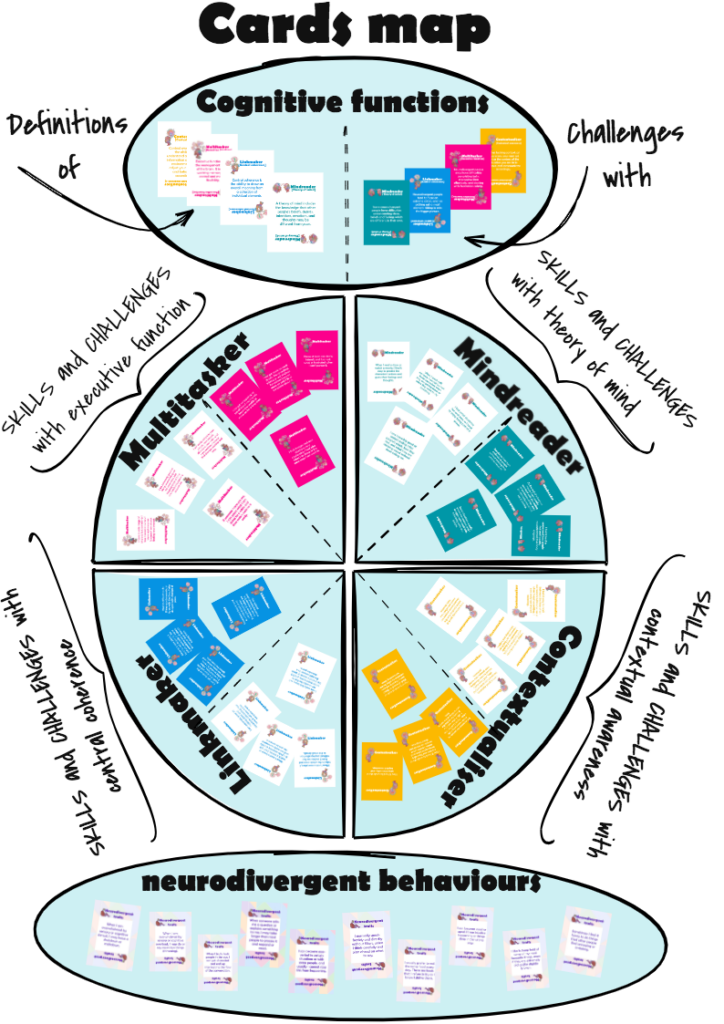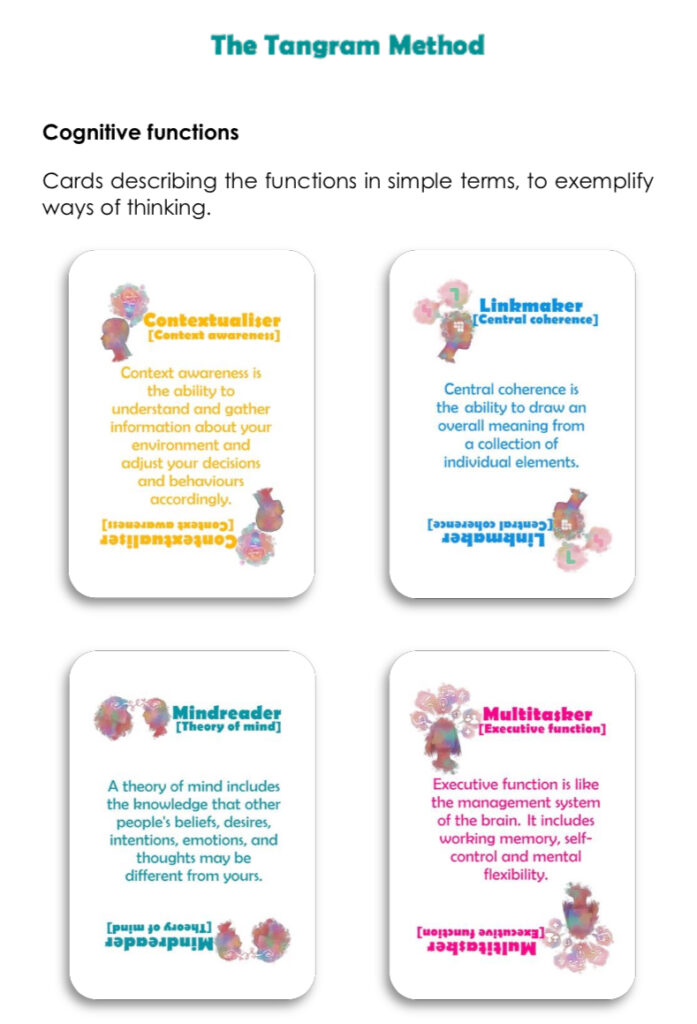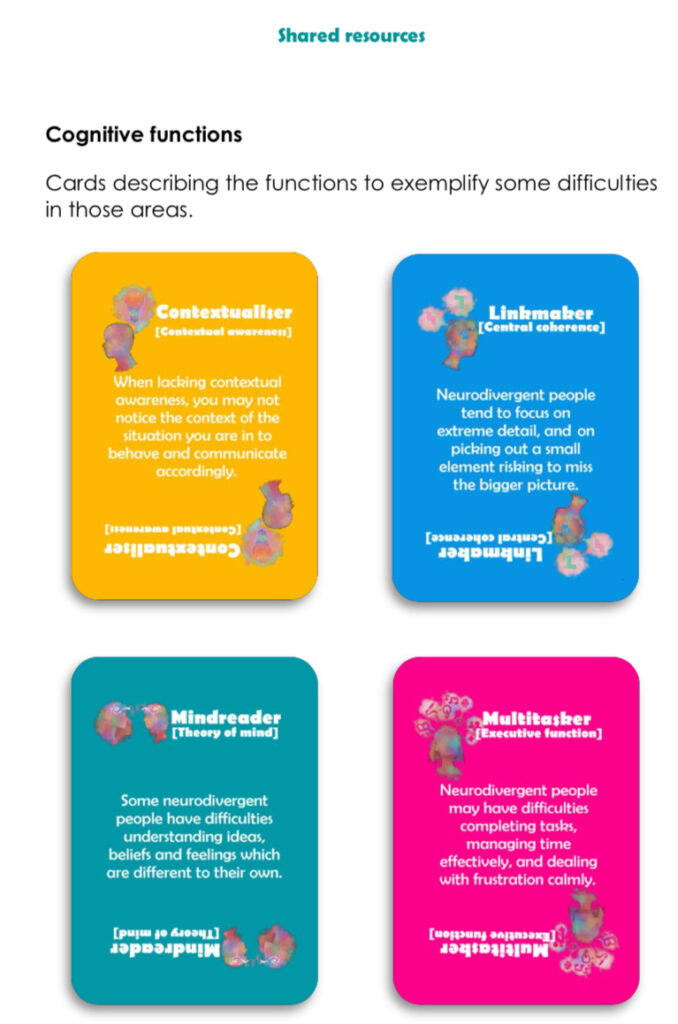Theory of mind and executive function
Many studies have investigated the relationship between the Theory of mind (Lecheler, 2021) and executive function (Lukito, S., 2017) in the prevalence of autistic traits.
Theory of mind is the ability to attribute mental states of others such as beliefs, desires, feelings and intentions. Executive function controls the integration of cognitive processes such as: planning; prioritising; directing attention; mental flexibility; multitasking; time management; and metacognition.
I believe that language continues to mediate learning throughout our lives, therefore, encouraging conversations about metacognition are critical to the Tangram approach to promoting autism self-awareness. In my experience, young people appreciate this activity and invest their cognitive drive into making sense of the cards; they search for their own thoughts, feelings and impressions of each situation described and take time and space to appreciate the language that validates them.
To foster such mediation, I developed the neurodiversity cards focusing on theory of mind and executive function as a conversation starter and self-reflection supporting device.
It appears to me that most young people relish the power to voice what they perceive as their identity and differentiate it from what they see as alien to them. Another reaction I observed repeatedly was an eye-opening gasp after reading a description they felt has actually put into words something they knew but had not articulated themselves.
Selecting the cards based on how they identify with their descriptions provides a golden opportunity to encourage such reflection and to provide affirmation where necessary.
The neurodiversity awareness card game consists of three types of cards:
- four cognitive functions presented as pairs including a definition and an example of challenges that can be faced by neurodivergent individuals
- four subsets of eight cards each, comprising those four cognitive functions presented through examples of skills and challenges
- ten extra cards describing some neurodivergent behaviours (see Cards map below)



